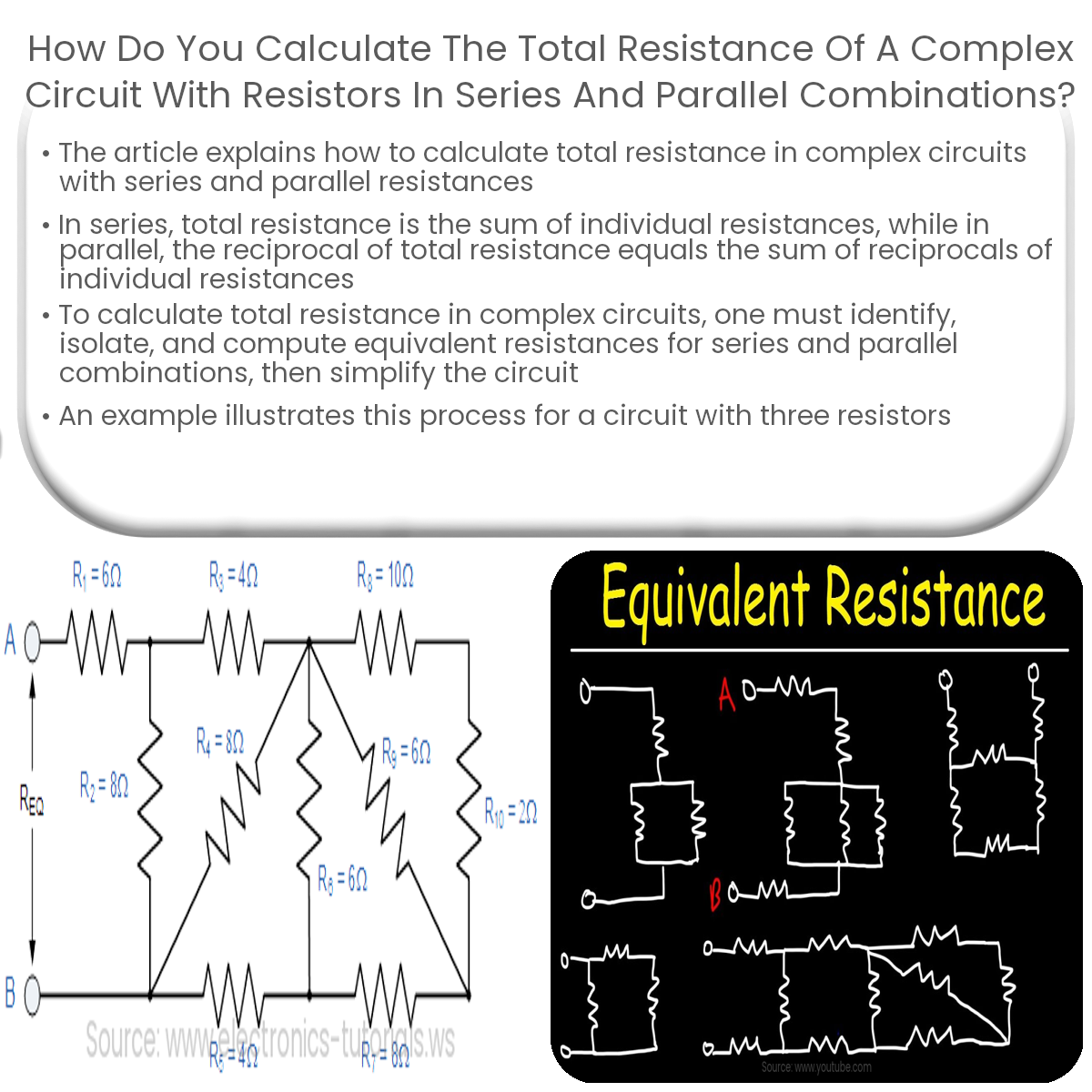To calculate total resistance in a complex circuit, first simplify series and parallel combinations, then combine the equivalent resistances.
Calculating Total Resistance in Complex Circuits
When analyzing complex circuits with resistors in series and parallel combinations, determining the total resistance is essential for understanding the circuit’s behavior. This article discusses the process of calculating the total resistance in such circuits.
Series Resistance
For resistors in series, the total resistance (RT) is simply the sum of the individual resistances:
RT = R1 + R2 + … + Rn
Parallel Resistance
For resistors in parallel, the reciprocal of the total resistance is equal to the sum of the reciprocals of the individual resistances:
1/RT = 1/R1 + 1/R2 + … + 1/Rn
To find RT, take the reciprocal of the result:
RT = 1 / (1/R1 + 1/R2 + … + 1/Rn)
Combining Series and Parallel Resistances
For complex circuits with both series and parallel resistances, follow these steps:
- Identify and isolate series and parallel resistor combinations within the circuit.
- Calculate the equivalent resistance for each combination using the formulas for series and parallel resistances.
- Replace the original resistor combinations with their equivalent resistances, effectively simplifying the circuit.
- Repeat steps 1-3 until you obtain a single equivalent resistance for the entire circuit.
Example
Consider a circuit with three resistors, R1 = 2Ω, R2 = 4Ω, and R3 = 6Ω, where R1 and R2 are in parallel, and R3 is in series with the parallel combination:
- Identify the parallel combination of R1 and R2.
- Calculate the equivalent resistance of the parallel combination: RP = 1 / (1/2 + 1/4) = 4/3Ω.
- Replace R1 and R2 with RP, resulting in a simplified circuit with RP and R3 in series.
- Calculate the total resistance: RT = RP + R3 = 4/3Ω + 6Ω = 22/3Ω.
Thus, the total resistance of the complex circuit is 22/3Ω.


